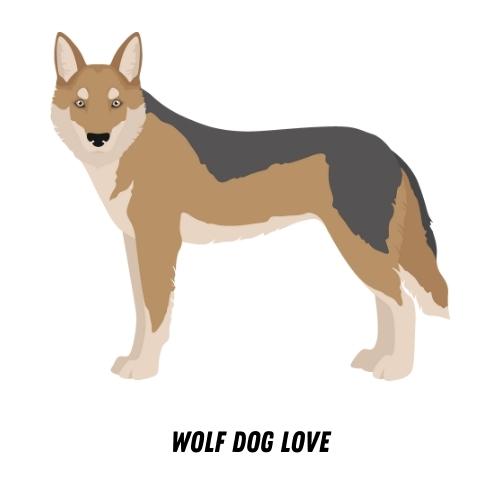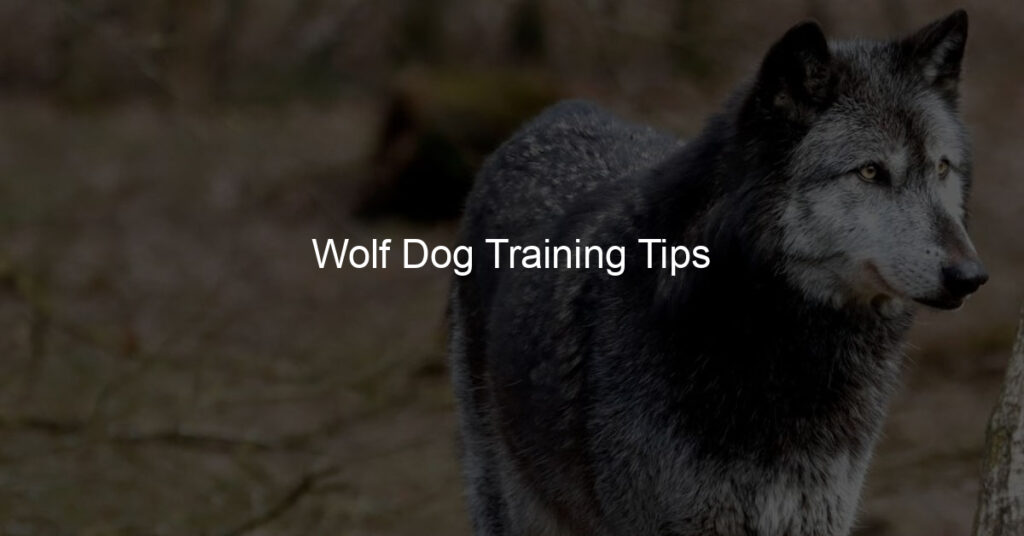So you want to get a wolf dog? Great! They’re amazing animals. But before you take the plunge, there are a few things you need to know about training them. Here are some tips on how to get started.
1. Start with basic obedience commands such as sit, stay, come, and down
2. Be consistent with your commands and rewards
3. Use positive reinforcement methods such as treats or praise
4. Avoid using punishment as it can make your dog fearful
5. Be patient when training your wolf dog – it may take longer than expected but it will be worth it in the end!
Is it easy to train a wolf?
Training a wolf is no small feat, as they are wild animals who may have very different instincts than domesticated pets. However, with patience and consistency, it is possible to teach wolves obedience, commands, and tricks which further showcases their remarkable intelligence.
Captive-bred wolves can be even more responsive to training than wild ones, as they often grow more accustomed to humans over generations. Training a wolf requires an understanding of the animal, such as knowing when a wolf’s behavior should be rewarded or discouraged. It oftentimes helps to tap into a wolf’s natural inquisitiveness for problem and task-solving.
A trained wolf continues to display their independent nature but also knows when a response is needed from the handler.
Are wolf dogs hard to keep?
Wolf dogs are often portrayed as complex and hard to handle, requiring a high level of commitment. The truth is that they need the same guidance and training as any other pet — though since they can be quite powerful, safety should always be taken into consideration.
Providing ample exercise, such as going for long walks, will keep them fit and help them channel their energy productively. Establishing boundaries and following through with consequences when needed helps with behavioral issues and is the key to successful wolf-dog ownership. Despite the extra challenges involved, taking care of a wolf-dog can prove to be both rewarding and satisfying.
How much exercise does a wolf-dog need?
Owning a wolf dog can be an amazing experience, but it requires a lot of dedication when it comes to exercise. Wolf dogs require more physical activity than your average household pet; they need to play, run and engage in activities several times per day.
Owners often take their wolf dogs out on hikes or long walks to satisfy their need for stimulation and exercise. If owners aren’t able to bring their wolves outdoors often, they should still ensure that their pets receive adequate exercise indoors. Daily interactive play time makes sure that both the physical and mental health of the animal remains in top condition.
Ultimately, the amount of workout needed by a wolf-dog depends on its breed, age, and size but generally, it needs longer and more regular physical activity than regular canines.
Can a wolf pup be tamed?
It is possible to tame a wolf pup, though it takes commitment and patience. Wolves are wild animals with their instincts, so it’s important to approach the taming process with respect.
Training should focus on forming positive associations and rewarding good behaviors while avoiding punishing bad ones. It is best to start the training as soon as possible after adopting the pup since early socialization can help form strong bonds of trust and companionship.
Ultimately, the goal is for both parties to be comfortable in each other’s presence by creating a safe and accepting environment where the wolf pup can learn and grow.
Which dog breed is closest to the wolf?
It’s no surprise that wolves are known as one of the earliest canine species, so it stands to reason that some dog breeds are the closest in comparison.
The Alaskan Malamute is a common breed that is said to resemble a close resemblance to its wolf ancestors. These versatile dogs were originally bred for transportation and hunting, possessing thick fur coats and an impressive trait of strength.
Another breed compared to its wilder cousin is the Siberian Husky, also bred as a working dog with traits such as endurance, intelligence, and independence. Ultimately, anyone looking for a more wolf-like companion should research these two breeds carefully before embarking upon their journey for the perfect pooch.
Why are wolf dogs hard to train?
Wolf dogs are a hybrid breed, consisting of a mixture of wolves and domesticated dogs. Because of their wolf lineage, they can be incredibly difficult to train due to their independent nature and wild instincts.
They require an experienced hand and extensive patience. Wolf dogs respond best when rewarded-based methods are used instead of traditional fear-based methods. Due to their pack mentality, owners need to establish dominance early on to create consistency, nurture trust, and communicate firm boundaries.
Training sessions should be short, and consistent and occur in a secluded environment free of distractions. It is also important for owners to remain vigilant; these hybrids need plenty of exercise as well as socialization opportunities with humans and other animals to prevent behavioral problems from arising.
Wrapping Up!
Wolf dogs are a unique and amazing breed, but they do require specialized attention to help them reach their full potential. They have incredible energy levels and a capacity for intelligence that makes them well worth your while when it comes to crafting the perfect training plan.
By providing stimulation both mentally and physically, taking advantage of positive reinforcement training tactics, and making sure to establish boundaries and rules, you can set yourself up on the right track with your wolf dog in no time.
Ultimately, it’s important that whatever techniques you use for wolf dog training, focus on consistency and staying positive. With patience, kindness, and consistency you will guarantee success in no time! Have fun with your wolf pup – cuddle sessions are never a bad idea!








